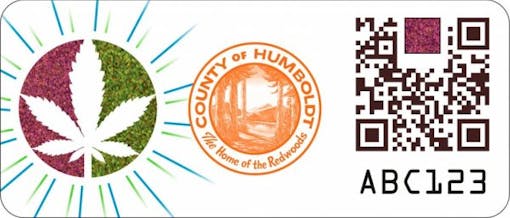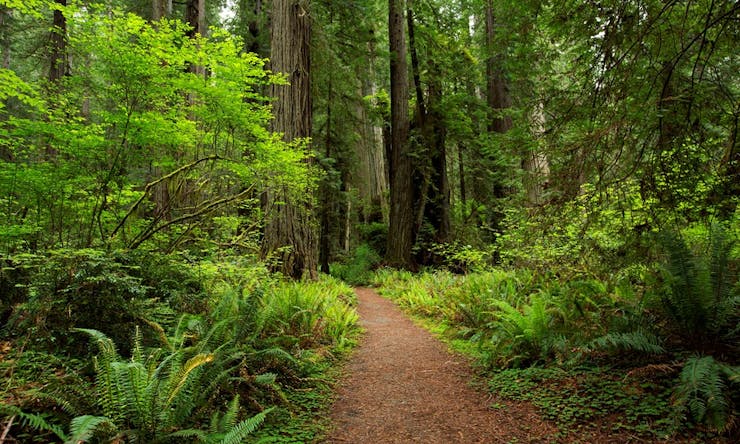Washington apples. Georgia peaches. How about Humboldt County cannabis?
Most consumers across the country are familiar with Northern California’s Emerald Triangle, the largest cannabis-producing region in the United States. Since the free-love 1960s, growers there have been cultivating cannabis that ranks among the best in the world. As markets across the country expand, local growers want to capitalize on that hard-won reputation. So beginning next month, producers in Humboldt County — one of three counties in the Emerald Triangle — will be able to officially stamp their cannabis as Humboldt-grown.
It’s an effort to “help protect the Humboldt artisanal brand,” county officials say. As of Aug. 1, stamps on Humboldt-grown cannabis products will carry a “proof of origin” sticker that includes a cannabis symbol, the county seal, and a QR code. Medical patients can download a smartphone app to scan the code and confirm a product’s authenticity.

Why does the county care so much about protecting primo bud? In large part it’s a track-and-trace effort, meant to ensure that legally grown cannabis isn’t diverted to the black market or sold to minors. But it’s also a sign of an effort among local growers to distinguish themselves from the rest.
In nearby Mendocino County, another member of the Emerald Triangle, farmers are carving the county into numerous smaller appellations, or specific growing regions. It’s an idea borrowed from the world of wine, meant to help discerning connoisseurs know what they’re getting (and brag about how exclusive it is).
“Emerald Triangle cultivators want to prevent others, with cannabis grown only partially or not at all locally, from exploiting the good will associated with the region’s traditionally high quality product,” cannabis branding attorney Alison Malsbury wrote in a blog post. “The hope is to prevent big corporations and outside companies from using the names of the region and sub-regions on their branding.”
Malsbury’s colleague, lawyer Hilary Bricken, later called the appellations project “one of the best cannabis branding ideas I’ve heard in a while.”
With adult-use legalization on the November ballot in California, the state’s legal cannabis market could dwarf other legal states almost overnight. NORML California executive director Dale Gieringer said earlier this year that California’s market could be as much as two to 10 times the size of Colorado’s. That’s likely to lure in all sorts of newcomers — and indeed it already has. Efforts like those in Humboldt and Mendocino county are ways for local, longtime growers to protect their home turf.
How much does all this matter in terms of the final product? It depends. In terms of indoor, hydroponically grown cannabis, there may not be much difference between a plant grown in Eureka and one grown in Los Angeles. But the same isn’t true for cannabis grown outdoors. Just as wine connoisseurs sing the praises of Napa Valley or France’s Burgundy, region, some in cannabis say the Emerald Triangle’s soil itself is special.
Tucked amid the Emerald Triangle’s dense forest are rumored 18-foot-tall cannabis plants and rare “estate” strains that growers have bred to flourish in California’s coastal climate. Terroir — the nature of a growing environment, from soil to topography to the fog rolling in off the ocean — is still a niche concept in cannabis, but it’s growing. As the legal market matures and more consumers start sniffing out “craft cannabis,” where and how a plant is grown will become ever more important.
“This is what makes wine so much fun for consumers,” Richard Mendelson, a wine law expert whose advice has been sought by the Mendocino Appellations Project, told the North Bay Business Journal, “to experiment and be able to go from the larger country and regional levels all the way down to the specific vineyard designation, and see, as a consumer, if you can spot those differences and understand the effect of terroir on the final product.”





